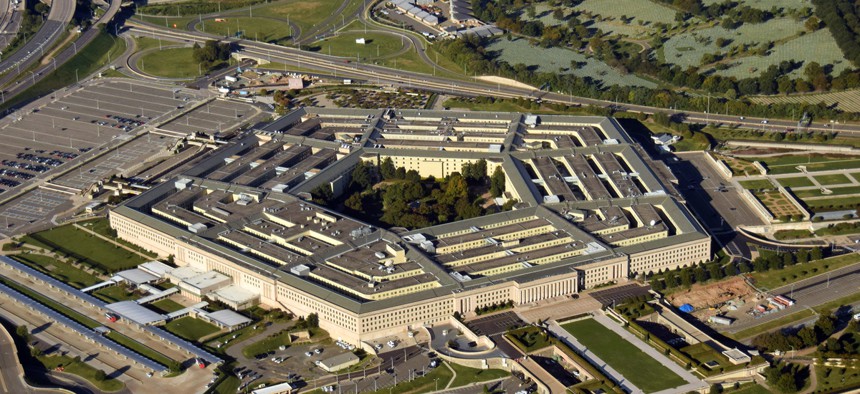For DOD, Innovation Isn’t the Problem. So What Is?

Ivan Cholakov/Shutterstock
Three officials from varying military offices focused on innovation asserted that the department’s research and development game is strong, it’s the follow-through that causes problems.
The Defense Department doesn’t have an innovation problem, according to three top officials in charge of leading innovation efforts. The military is very good at coming up with new technologies; the problem comes when services try to adopt those new ideas.
The department has a long history of innovating, according to Steven Walker, director of the Defense Advanced Research Projects Agency, or DARPA, which 50 years ago created the networking protocols that would later become the internet.
“The country is innovative,” he said during a panel Wednesday at the 2019 Defense News Conference. “It’s the application of some of that innovation that we struggle with.”
“I don’t think the Department of Defense has an innovation problem,” said Mike Madsen, director of strategic engagement at the Defense Innovation Unit, an office established to bolster and speed contracting with small companies and those that don’t normally do business with the government.
“It has an innovation adoption problem,” Madsen agreed. “There’s a reluctance to iterate, a reluctance to embrace that Silicon Valley mantra of ‘fail early, fail often, fail fast.’ You’re not failing, you are continuing to gain insights.”
That mindset has taken hold at innovation shops like DIU and DARPA, where pushing the boundaries of research and development are part of the job. But changing that culture at the operational level is proving more difficult.
“We sort of have the easier job—proving something can be done and taking the technology excuse off the table,” Walker said. “The harder part is … organizing, training, equipping—taking that new technology, that new innovation and making it operational, that’s the hard part. That’s where we’re struggling, in the application of new technologies.”
Walker suggested some reasons for why this is the case through the department, including long-standing processes that make change difficult.
While officials were not able to offer a single quick-fix for this problem, Gen. Stephen Wilson, Air Force vice chief of staff, said the most important thing is for leaders to show they trust their employees.
Wilson said his boss, Air Force Chief of Staff Gen. David Goldfein, will likely say as much at an upcoming meeting with leadership from across the branch.
“I promise you, he’ll tell them this—as he told them last year—‘I trust you, go long, I have your backs. Don’t wait for me, go long. I’ve got you,’” Wilson said. “That’s a critical part of how we’re making every squadron its own innovation hub that believes ‘I can take risks, I can fail,’ and we’ll move the Air Force forward.”
Trust is key, Walker agreed, and leaders need to foster a culture of trust all the way down the ranks.
“At DARPA, I think another ingredient is a culture of impact,” he offered.
The very nature of DARPA’s work does not lend itself to low-risk, high-impact research. Therefore, for researchers to make any impact, the agency has to be willing to risk failure at a high level.
“If you have a culture that rewards program managers for coming up with ideas and programs that are high-impact—programs that will change the world if successful—then we have to accept that risk,” he said. “Now, that doesn’t mean we like to fail. We manage that risk by putting milestones into those programs … and make sure we’re approaching the goals we set.”
The department will have to make those culture changes if it expects to be competitive globally, Madsen said.
“Our would-be adversaries … have been very proficient at leveraging the imagination of a lot of the folks that are outside their traditional procurement and acquisition system,” he said. “I think that’s something the Defense Department has to do.”
Editor's Note: This story has been updated to correct the spelling of an official's name and clarify a quote.
NEXT STORY: FCW Insider: Sept. 5



